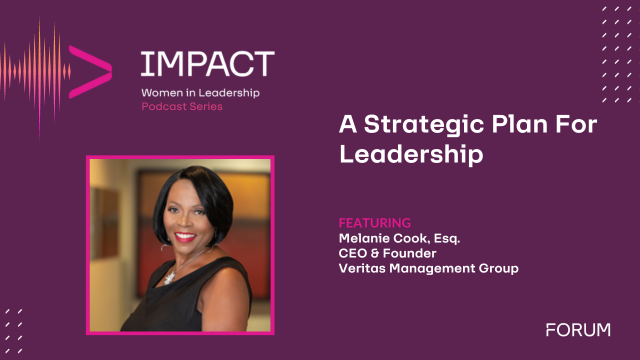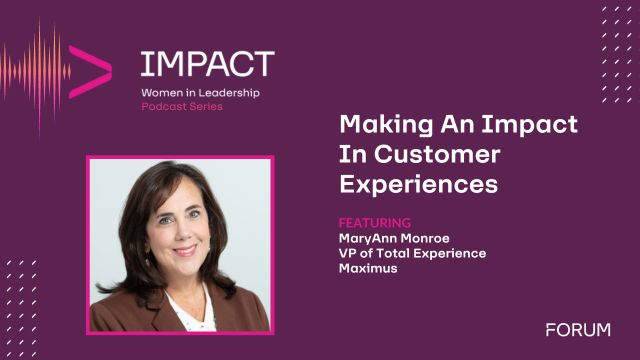G2Xchange recently had the chance to sit down with Mike Deutsch, Chief Growth Officer at CollabraLink and the company’s Vice President of User Experience, Sean Fitzpatrick, to discuss Human Centered Design and why it is a vital part of agency modernization strategies.
What is Human Centered Design?
HCD is a methodology which puts the end user, beneficiary, or consumer of whatever service you are providing at the center of all design efforts. The basic process includes user research to truly understand user needs and behaviors, design and prototyping of solutions to meet those needs, and iterative testing for usability with representative users. This approach has been in practice in the commercial sector for many years and has been called different names – from human factors, to human-computer interaction, to usability – but the core processes are the same, whether you are designing a walk-in service like you might experience at the Post Office or a digital service, such Ed.gov or Healthcare.gov.
It is interesting to note that HCD as a methodology is often at the core of many service disciplines, including CX (Customer Experience) and Service Design.
Finally, on the Government side, the application of HCD lags a bit behind the commercial sector, but thankfully groups like, USDS and 18F have cast a light on its benefits and leading agencies, such as HHS and CMS, are now focused on meeting the rise of digital citizens, who demand usability.
What are Some of the Challenges When HCD is not Employed?
The biggest challenge we see is when Government teams design and build systems and services that do not meet real users’ needs, which leads to low adoption and high frustration. As an example, we worked on a program looking at a digital communications strategy related to opioid use. The presumption was that the audience would be mental health providers, clinicians, academia. We used the HCD processes and user research to confirm who the actual target audience was and found that the assumption was largely incorrect and in fact, the audience included a large segment of the general population who were NOT medical professionals. That knowledge allowed us to pivot and change the direction of our content strategy and overall user experience design approach.
If we think of a care delivery model like Medicaid and supporting digital services, HCD is being applied with great success to design mission-critical systems and services. As we’ve seen, challenges or misunderstandings within the digital space can delay getting care to those who need it. Our approach is to address real user needs based on user research, making the processes as user centric as we can. The result is a more efficient delivery of Healthcare to the people who need it when they need it.
Why is This Not More Standard?
The HCD process sounds intuitive – and in fact it does yield better outcomes – but we aren’t talking about a trivial amount of time or energy. It’s almost a philosophy and while the payoff is significant, it does take that up-front commitment to research your users and iteratively design user experiences (UX) which meet their needs.
The good news is that there is a happy medium in which HCD can be woven into an Agile framework. There are many methods and tactics (user interviews, contextual inquiries, observation, etc.) that we use to conduct initial research quickly, allowing for prototypes and design solutions that we can get in front of those same users for feedback early and often.
The big thing about HCD is that we build empathy for the user AND our agency-partners who “own” the service. That empathy – for the end user and the agency stakeholder – is essential and ensures buy-in from both sides by the time the final solution is delivered.
Change Management
Getting buy-in to the HCD process is critical, as this process is a big change of perspective for many agencies. We know managing this change is hard and when we think of Government, who has been building systems for a long time with an inward, rather than an external user focus, that transformation can be a real challenge. Once people see HCD put into practice and see the real results, they almost invariably embrace it, but at the outset it requires education for all who are involved the process.
We had a recent experience with a client at CMS who was able to come out on the road with us as we conducted baseline user research. This was the first time they were able to interact with one of their key user groups and listen to how they do their jobs and how the systems in place meet – or do not meet – their needs. We found that the existing systems could be dramatically improved to align more closely with external users’ processes and mental models. It was this exercise that allowed our agency partner to “walk in the users’ shoes” to see where change was needed and really see the impact change could create. Importantly, engaging with the users at this early design stage also lays the foundation for adoption as the products are delivered – they maintain a certain equity in the process.
What Skillsets are Needed?
There are many tools available to facilitate HCD but ultimately it requires experts with specialized skill-sets, namely User Researchers (trained in human factors, human-computer interaction, and cognitive psychology), Interaction Designers (skilled in information architecture and the development of user experience (UX) designs to accommodate complex user flows), and Content Strategists (experts in content modeling, taxonomy, metadata strategies, and plain-language content development.)
What Comes Next?
The USDS Playbook was really the first of its kind for Government and codifies HCD, Agile, and DevOps. While we have been practicing HCD in Government for many years, the Playbook really sets the baseline for forward movement. Sitting where we are today, with HCD, DevOps, and Agile – and with a more cloud centric environment–we have a powerful combination of tools to work with in fulfilling modernization and digital transformation.
In addition, there is a lot of market interest in Intelligent Automation (including Robotic Process Automation) and we see great utility in it. This approach will liberate Government staff to get more done, to be more strategic about what they are doing, and to make what they are doing more fulfilling for the stakeholder, for the end user, and for the Government. We really see these automation use cases as a natural outcropping of the HCD we are conducting – by understanding and developing that empathy for their current situations, we can readily identify opportunities to integrate tools like RPA into the mix to add even more value to the solutions we are producing.
About Mike Deutsch
 As Chief Growth Officer, Mike is primarily responsible for developing and executing all facets of CollabraLink’s business development strategy, while also ensuring the company’s solutions continue to evolve in advance of market need to generate business value for our customers. Prior to joining CollabraLink, Mike led business development efforts at Aquilent, overseeing strategic pursuits within HHS, including ASPA, CMS, FDA, and NIH, as well as several other Fed-civilian accounts. Mike also has a history in management consulting, having led the enterprise-wide rollout of the Navy’s SeaPort acquisition program.
As Chief Growth Officer, Mike is primarily responsible for developing and executing all facets of CollabraLink’s business development strategy, while also ensuring the company’s solutions continue to evolve in advance of market need to generate business value for our customers. Prior to joining CollabraLink, Mike led business development efforts at Aquilent, overseeing strategic pursuits within HHS, including ASPA, CMS, FDA, and NIH, as well as several other Fed-civilian accounts. Mike also has a history in management consulting, having led the enterprise-wide rollout of the Navy’s SeaPort acquisition program.
About Sean Fitzpatrick
 Sean Fitzpatrick brings over 23 years of experience leading User Experience (UX) and Human Centered Design (HCD) digital service transformations throughout the Federal and Commercial sectors. As Vice President, User Experience, Sean is primarily responsible for leading and growing CollabraLink’s UX and HCD practice across the CollabraLink portfolio of projects and accounts. Prior to joining CollabraLink, Sean held the position of Principal/Director of User Experience for Booz Allen Hamilton and Aquilent, where he led their UX and HCD practices. For the past 14 years, he focused on building solutions and teams to design engaging, highly-usable digital services for the Federal government, including HealthCare.gov, HHS.gov, USPS.com, and Usability.gov.
Sean Fitzpatrick brings over 23 years of experience leading User Experience (UX) and Human Centered Design (HCD) digital service transformations throughout the Federal and Commercial sectors. As Vice President, User Experience, Sean is primarily responsible for leading and growing CollabraLink’s UX and HCD practice across the CollabraLink portfolio of projects and accounts. Prior to joining CollabraLink, Sean held the position of Principal/Director of User Experience for Booz Allen Hamilton and Aquilent, where he led their UX and HCD practices. For the past 14 years, he focused on building solutions and teams to design engaging, highly-usable digital services for the Federal government, including HealthCare.gov, HHS.gov, USPS.com, and Usability.gov.
About CollabraLink
CollabraLink is committed to partnering with Federal clients with simple and intuitive solutions that increase efficiency and enhance citizen engagement. At CollabraLink the end user is at the heart of our designs. CollabraLink employs human-centered principles–driven by user research, interaction design, and usability testing–to increase program effectiveness through innovative solutions and improved user experience designs.












